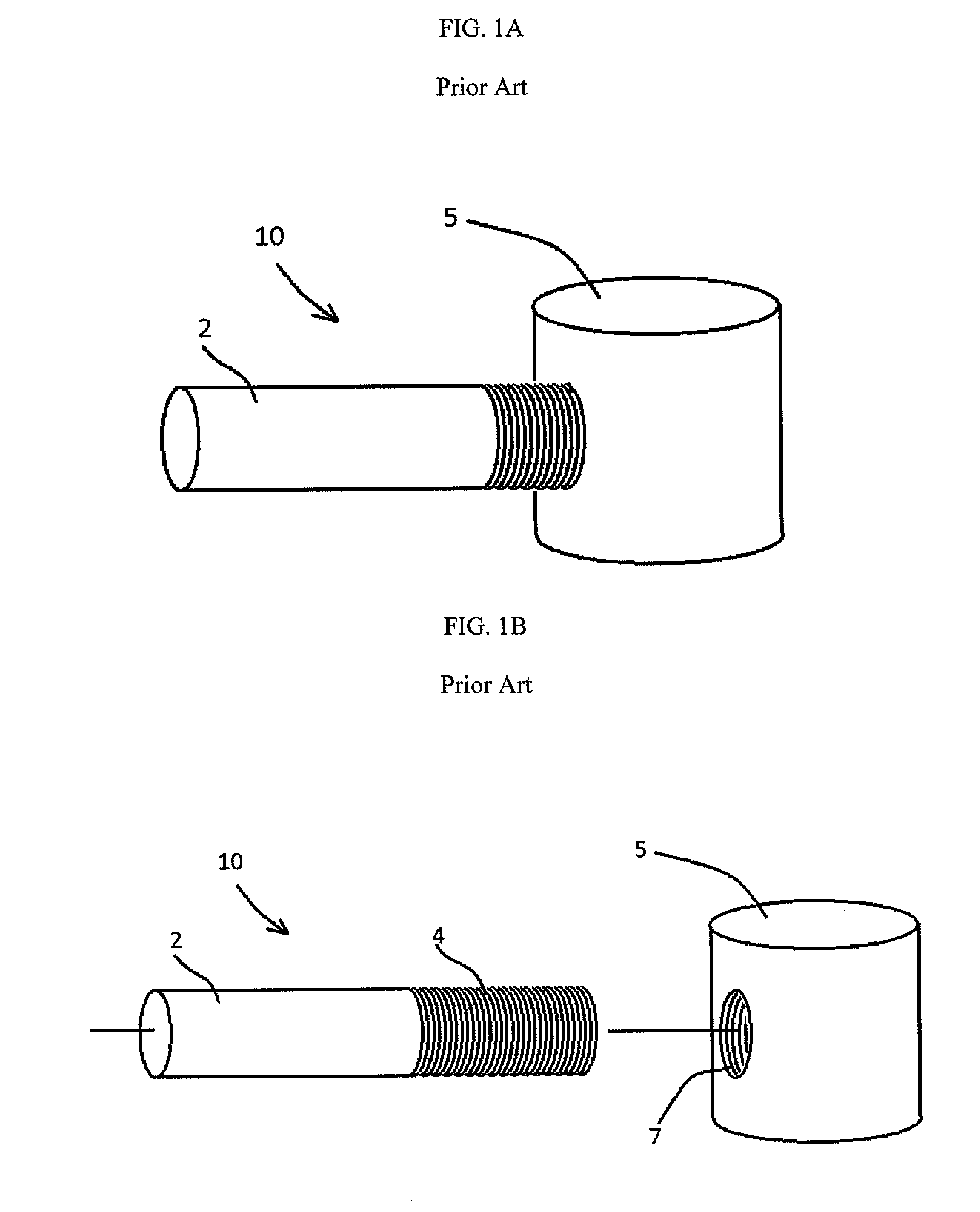Insert and Method of Attaching Insert to Structure
a technology of insert and structure, which is applied in the direction of machines/engines, sustainable manufacturing/processing, and final product manufacturing, etc., can solve the problems of increasing warping in the cross-nut hole and/or the root cylinder, delamination near the insert, and extremely difficult to ensure the thorough filling of the space around the insert, etc., to achieve the effect of long service life and increased warping
- Summary
- Abstract
- Description
- Claims
- Application Information
AI Technical Summary
Benefits of technology
Problems solved by technology
Method used
Image
Examples
Embodiment Construction
[0044]Example embodiments will now be described more fully with reference to the accompanying drawings, in which example embodiments of the invention are shown. The invention may, however, be embodied in different forms and should not be construed as limited to the example embodiments set forth herein. Rather, these example embodiments are provided so that this disclosure will be thorough and complete, and will fully convey the scope of the invention to those skilled in the art. In the drawings, the sizes of components may be exaggerated for clarity.
[0045]In this application, it is understood that when an element or layer is referred to as being “on,”“attached to,”“connected to,” or “coupled to” another element or layer, it can be directly on, directly attached to, directly connected to, or directly coupled to the other element or layer or intervening elements that may be present. In contrast, when an element is referred to as being “directly on,”“directly attached to,”“directly con...
PUM
| Property | Measurement | Unit |
|---|---|---|
| structure | aaaaa | aaaaa |
| thickness | aaaaa | aaaaa |
| compressive stresses | aaaaa | aaaaa |
Abstract
Description
Claims
Application Information
 Login to View More
Login to View More - R&D
- Intellectual Property
- Life Sciences
- Materials
- Tech Scout
- Unparalleled Data Quality
- Higher Quality Content
- 60% Fewer Hallucinations
Browse by: Latest US Patents, China's latest patents, Technical Efficacy Thesaurus, Application Domain, Technology Topic, Popular Technical Reports.
© 2025 PatSnap. All rights reserved.Legal|Privacy policy|Modern Slavery Act Transparency Statement|Sitemap|About US| Contact US: help@patsnap.com



